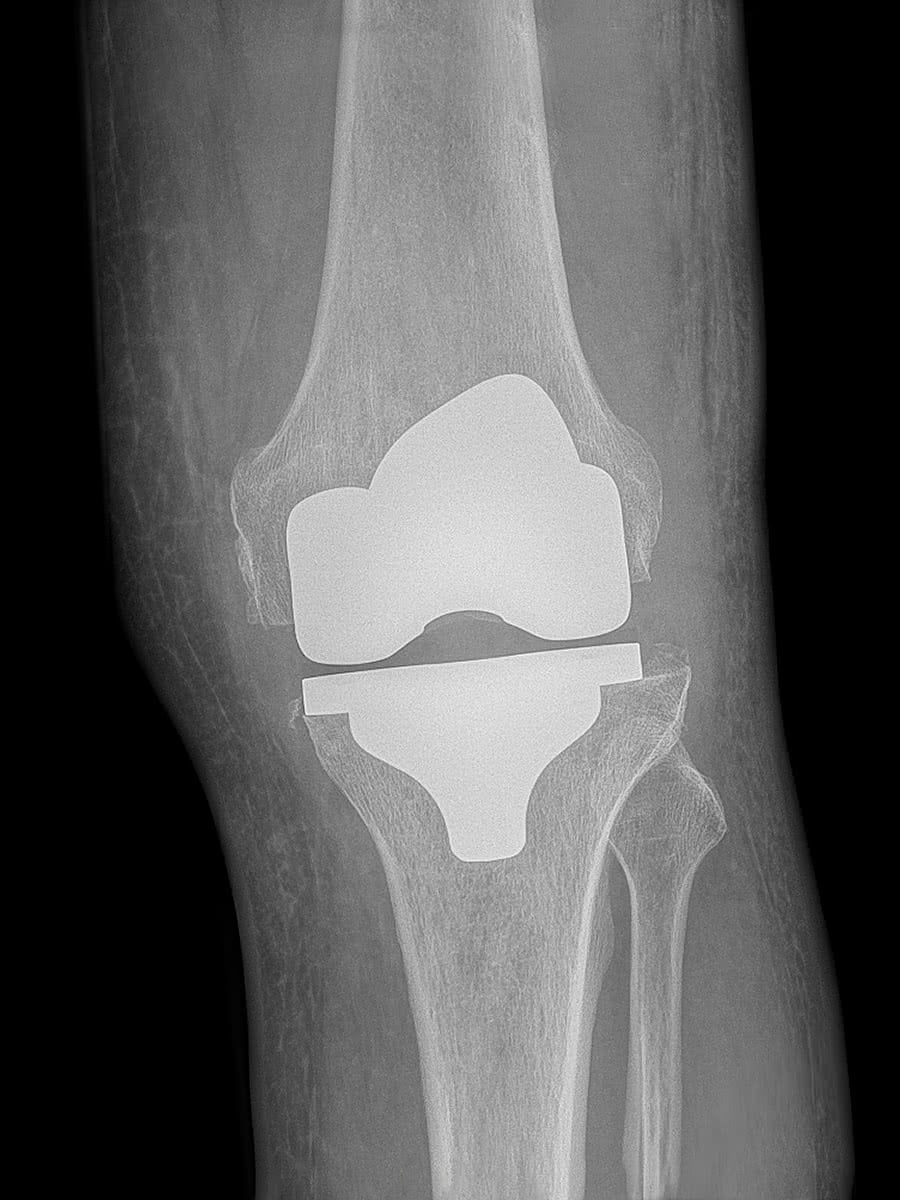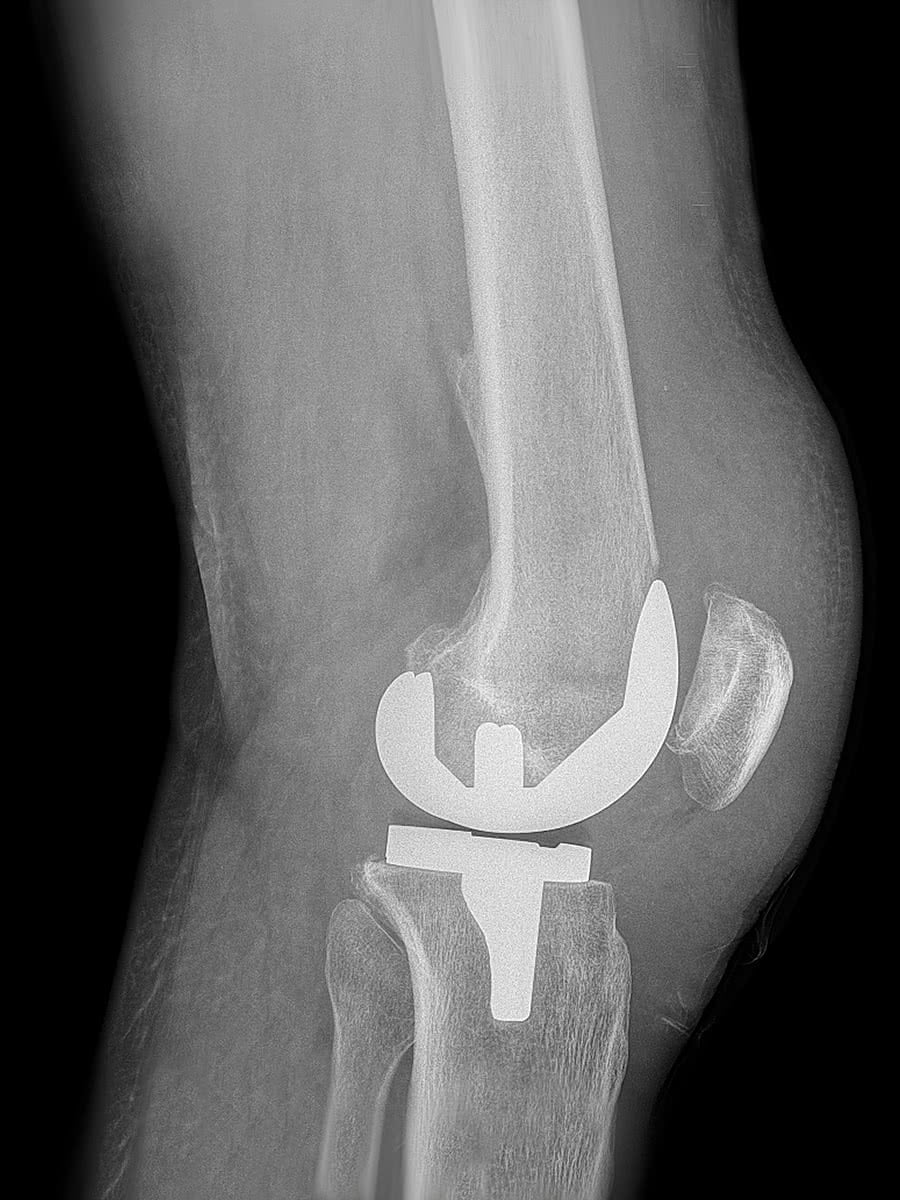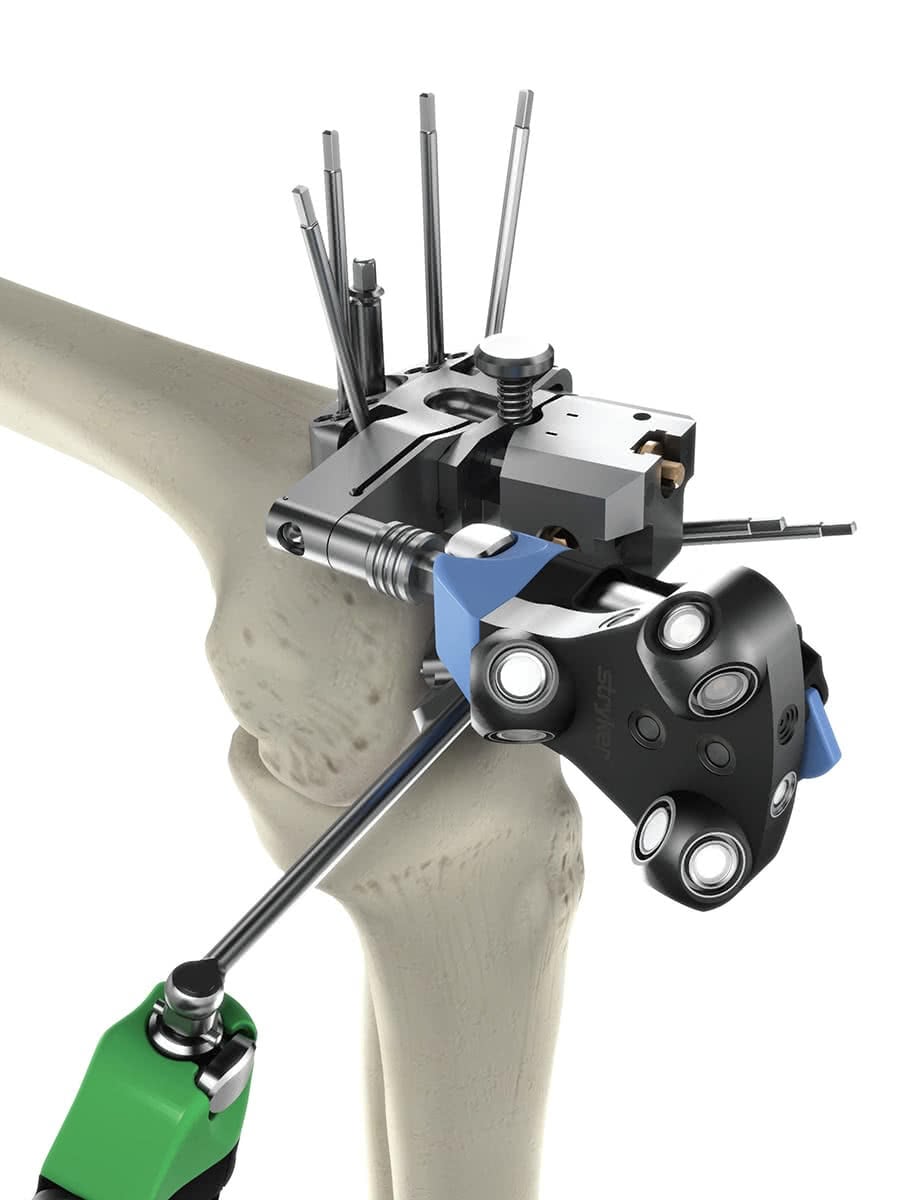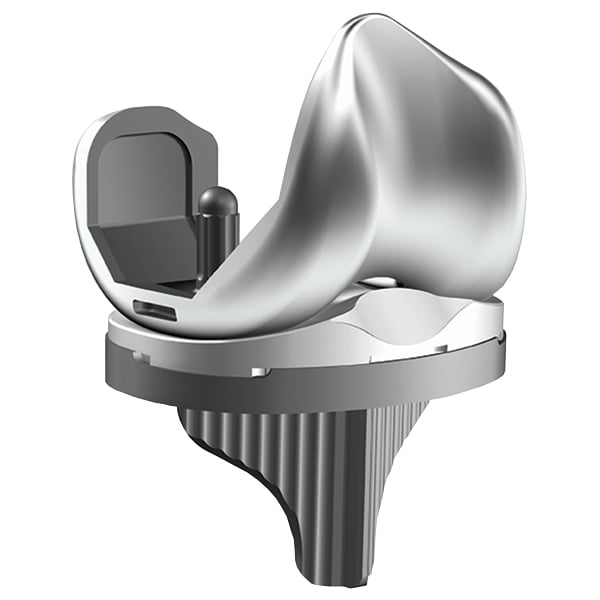Introduction
Total Knee Replacement is one of the most common and successful operations in orthopaedic surgery today. Over sixty thousand knee replacements were done in Australia in 2017, and the number grows every year. Upwards of 90% of cases have a very successful outcome.


This operation is typically performed to relieve the pain of severe arthritis, and works by resurfacing the ends of the thigh and lower leg bones (femur and tibia) with metal components and fitting a specialized polyethylene plastic spacer between these to act as a replacement for the cartilage. In some cases, the under surface of the knee cap is also resurfaced with this plastic.
After a successful TKR, patients can expect to return to routine activities such as walking long distances, working, gardening, even light sport (although running is not encouraged).
Indications
The time to consider undergoing knee replacement surgery is when the pain in your knee is so severe that it is having a significant impact on your day to day activities. It is important that you have tried all reasonable non-surgical treatments, as some patients with severe arthritis on their x-rays can still cope quite well without surgery. It is not until your pain is fairly constant and severe that the potential benefits of surgery outweigh the risks and make it worthwhile going through the recovery period.
Preoperative Instructions
You will be given a full briefing of how to prepare for your total knee replacement procedure well in advance of the day of surgery. In very general terms you will need to...
- Let our team know what other medication you are taking and follow our guidelines on taking these medications in the days/weeks before surgery.
- This is particularly pertinent to blood thinning medications such as aspirin, warfarin, clopidogrel and Xarelto.
- Let our team know if you develop symptoms of any illness (including a cold or fever) or if you believe you may be pregnant.
- If you smoke, stop smoking ideally several days or weeks ahead of the procedure, but at the very least not smoke after midnight the night before surgery.
- Maintain your strength and mobility as best as possible, some patients attend physiotherapy prior to the surgery in preparation.
- You will be seen in the hospital pre admission clinic and by the anaesthetist prior to surgery. They will give further details on the process and what to expect. Blood tests and an ECG test of the heart will be performed
- Not eat or drink anything for a minimum of 8 hours prior to admission.
- Bring all available and relevant imaging with you to hospital.
- Ensure you are pre-organised at home with meals, mobility aids, and people to help over the first few days once you get home.
Procedure
The operation typically takes around one hour to complete. You will be given a general anaesthetic, (supplemented with a nerve block or local anaesthetic infiltration). A tourniquet is used to prevent bleeding and an incision of around 20cm is made on the front of the knee. Once the joint is exposed, the surfaces of the bones are cut away and after trialing sizes, new metal components are fitted to match the excised surfaces and re-align and re-tension the joint appropriately. The polyethelene spacer is added between the other components.
There are a number of variables involved and choices to be made in achieving a good result with this surgery
- Prosthesis choice.
- Method of alignment for the bone cuts.
- Whether or not the patella is resurfaced.
Prothesis Choice
There are many different designs, brands, and versions of knee replacements. Like if you are choosing a car, do you want a Sedan or Wagon? Holden or Ford? LT? VX? XR6?
Mr Callahan uses one of the two most commonly implanted prostheses, which has proven itself to have equally top results, with over 15 years of successful implantation in Australia. This is known as the “Stryker Triathalon Knee Replacement”. In most cases your replacement will be of a “posterior cruciate retaining” design, and uses uncemented fixation techniques. By this we mean that the posterior cruciate ligament is left intact for stability and the components are coated with a special layer of hydroxyapatite on their back surface to allow the metal to bond directly to the bone. Please feel free to discuss the specifics of the prosthesis with Mr Callahan.
Alignment Method
There are four available methods used for aligning and preparing the bone cuts.
- Standard instrumentation. ( Measurement jigs and cutting blocks are attached to the bones using visible or palpable land marks) This is the oldest and least accurate way of alignment
- Patient Specific Instrumentation. ( A scan of the knee and leg are obtained weeks ahead of the op, the cuts are planned on a computer model prior to surgery, guides that match the current anatomy are manufactured to allow the surgeon to reproduce the plan during the operation). Accuracy is not as good as the methods below
- Computer Navigated Surgery. (This is the method used by Mr Callahan, see below)
- Robotic Surgery (Very similar to Computer Navigated Surgery except instead of using a saw to make the cuts, a high-speed burr removes the bone. The “robot” actually does nothing more than partially control the burr to ensure the surgeon gets it right). There is no strong scientific data to suggest that this is superior to computer navigation alone.
Computer Navigation


In this technique, infra-red tracking devices are placed on the bone and used to map the surfaces during the surgery. These send information on the position of the various landmarks on the bones to a camera attached to a computer. The computer then creates a real time model in the system demonstrating the current anatomy. The guides used to cut the surfaces also have the trackers on them and are positioned to match the precise alignment and resection level planned on the computer model. It is like a miniature GPS system for the knee that allows the most accurate method for alignment, measurement and reproduction of the plan onto the actual bones. It can also provide information on the way the knee moves after implantation and balancing the tension within the ligaments of the knee.
These superior attributes of computer navigation are hoped to provide:
- Greater ease of movement.
- Improved joint stability.
- Faster recovery.
- Better long term outcomes and prosthesis longevity with a lower risk of requiring revision surgery in the future.
Patella resurfacing
The “right answer” on whether or not to resurface the patella (knee cap) or on which patients this part of the operation should be added is unclear and debated in the scientific studies. On one hand, it seems there is a slightly lower risk of having persistent anterior knee pain if it is done, but the potential complications of resurfacing the patella are also significant. The Stryker Triathalon Knee has specific design features that mean in most cases it performs well without resurfacing the patella. As such, in 90% of TKRs, Mr Callahan does not include this step.


Postoperative Instructions
After the procedure you will stay in hospital for about three to four days, depending on your progress in therapy. You will be encouraged to get out of bed and walk around a little from day one and your therapist will guide you through some exercises.
You will use crutches or other gait aids for mobility and safety, these will usually be required for three to four weeks.
At the point at which you are able to walk, sit in a chair (and get out of one) you will generally be able to return home. Some patients may take longer to reach this point than others. The first few weeks after a TKR can be quite uncomfortable, but this improves in a steady fashion.
You will be given a full set of rehabilitation instructions and exercises to follow when you leave hospital.
You may drive once you can walk easily without gait aids. If it is the left leg and you have an automatic car this may be earlier.
Your first follow-up appointment will be scheduled for about 10 days after the surgery.
By around 4 weeks, most patients are using a single stick, one crutch or no gait aids. By 8 weeks most of the severe discomfort should be resolved, and patients are returning to activities such as work, longer walks etc.
Risks
All surgery carries with it some form of risk. Common risks that apply to all surgery, including an ankle ligament reconstruction, are...
- Bleeding.
- Formation of a blood clot (“DVT” or deep vein thrombosis) Pieces of clot in the leg can break off and lodge in the lungs causing a pulmonary embolism. This can be very serious, and in rare cases even cause death.
- Infection. see notes on prosthetic joint infection.
- Nerve damage – it is common to have a numb patch next to the incision.
- Difficulty getting the wound to heal.
- Abnormal pain reactions or nerve hypersensitisation known as complex regional pain syndrome (CRPS).
Risks that are related specifically to Total Knee Replacement include...
- Fracture of the bones during surgery.
- Problems with initial or secondary fixation of the metal components.
- Incomplete relief of pain – up to 10% of replaced knees have unexplained pain afterwards.
- Progression of arthritis of the patella if not resurfaced.
- Stiffness or impaired range of movement.
- Difficulty kneeling on your replaced knee afterwards.
- Eventual wear or loosening of the prosthesis.
